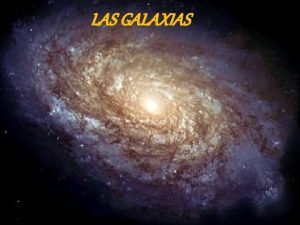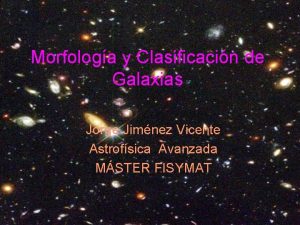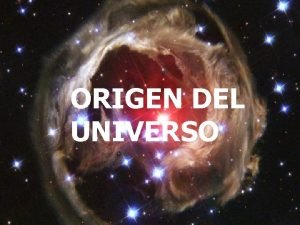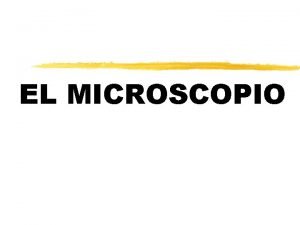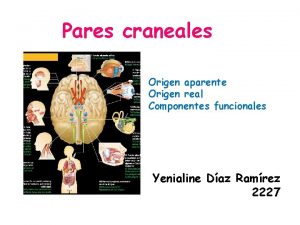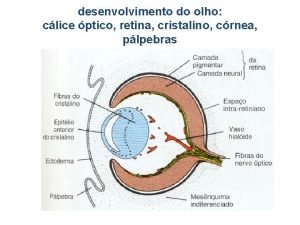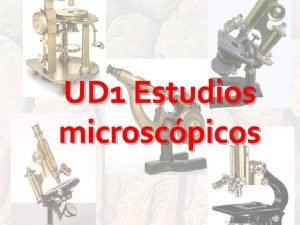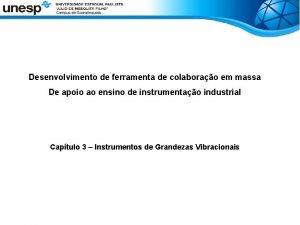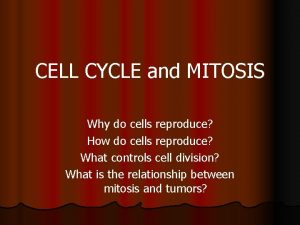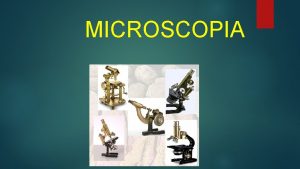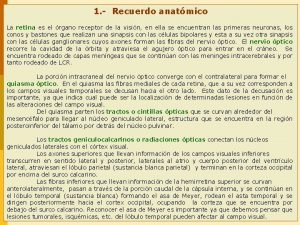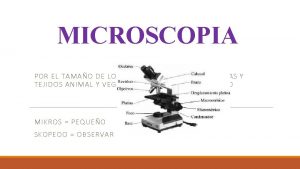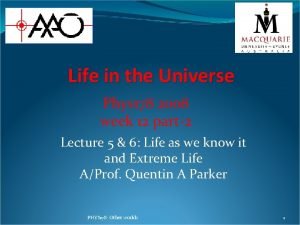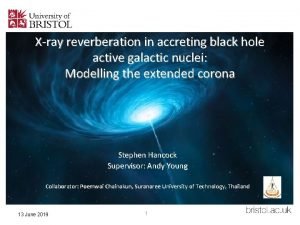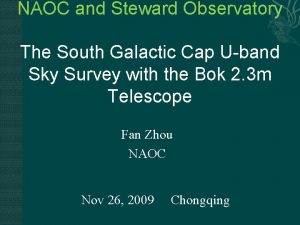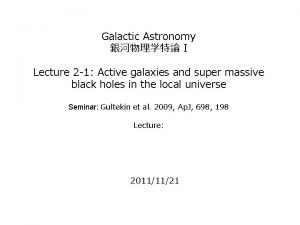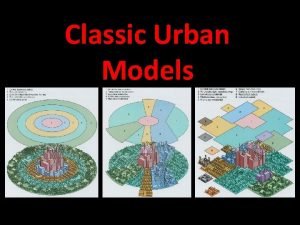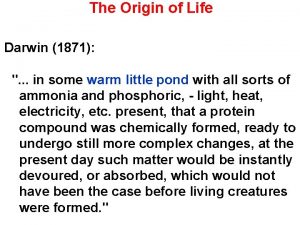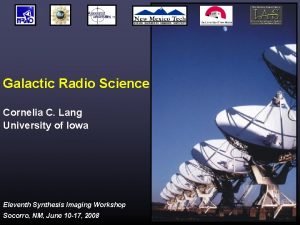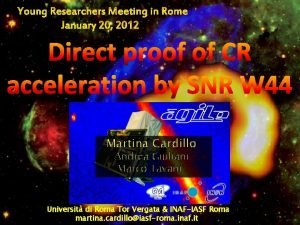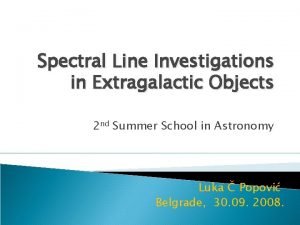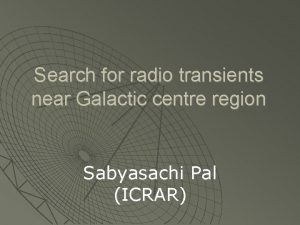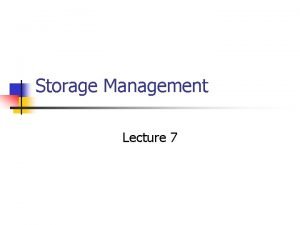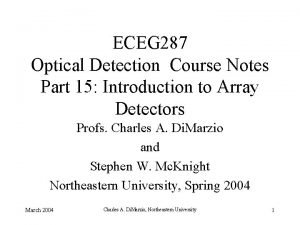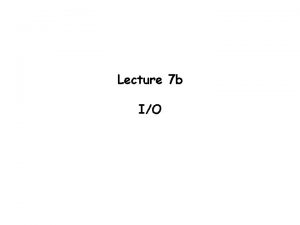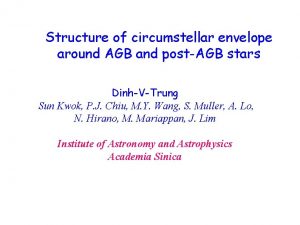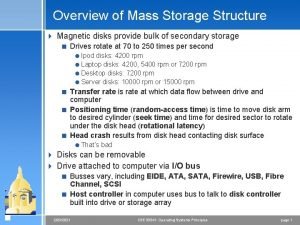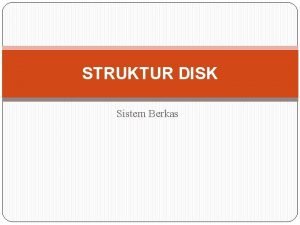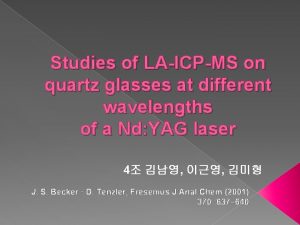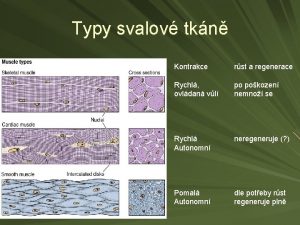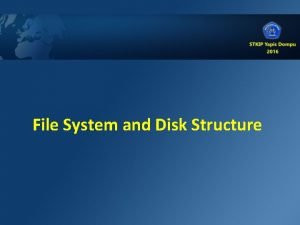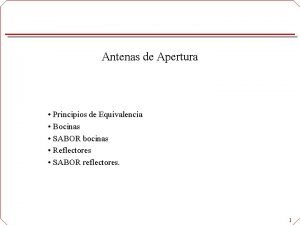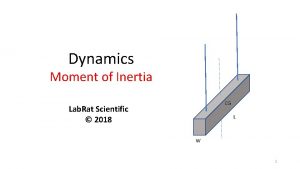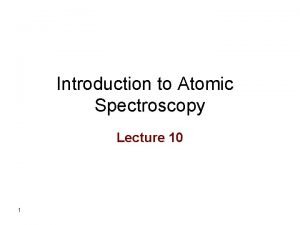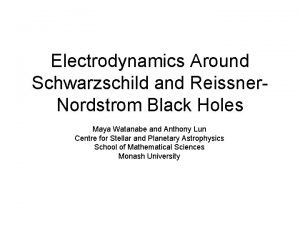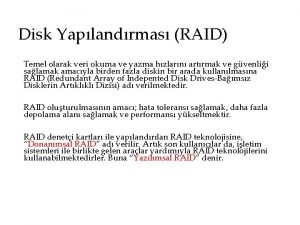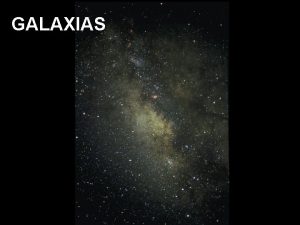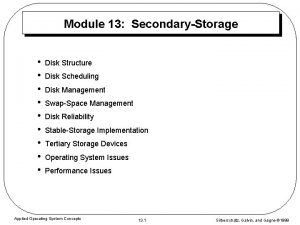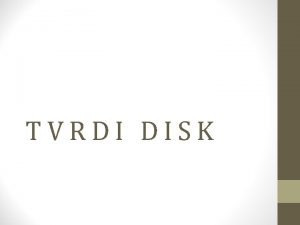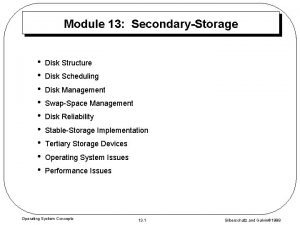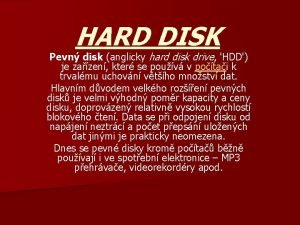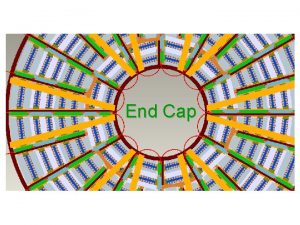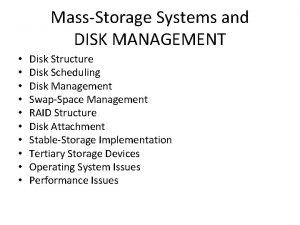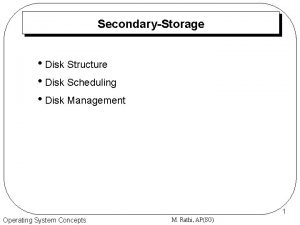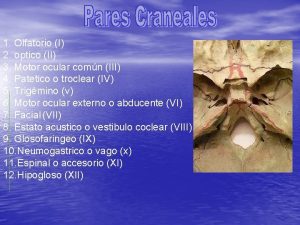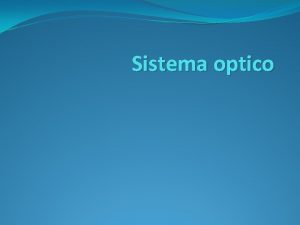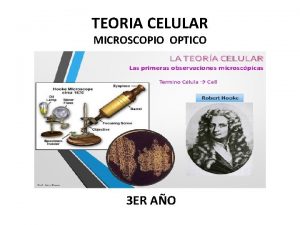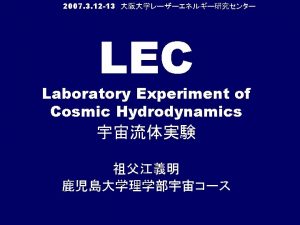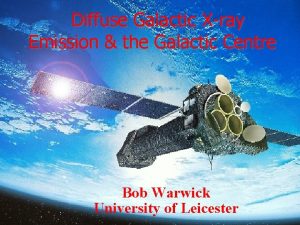GALAXIAS Optico Infrarojo The Galactic Disk The disk
































































































- Slides: 96

GALAXIAS

Optico Infrarojo



The Galactic Disk The disk of our Galaxy is made up of three main components: Ø Stars Ø Gas Ø Dust

The gas in between stars is the “Interstellar Medium” (or “ISM”) Like everywhere, most gas in the disk is hydrogen. Molecular (H 2): Cold, dense, tightly clumped. Stars form within molecular clouds. “Neutral” or Atomic (HI): Cool, less dense, less tightly clumped. Most common phase; the reservoir forming the next generation of stars. “Ionized” (HII): Hot, more diffuse. By-product of forming young stars.

Young massive stars die out, and electrons and nuclei recombine Ionized HII Atomic HI Gas is compressed, and cools Molecular H 2 Young massive O-stars form, and ionize the gas

Fountains and Blowouts SNe from newly formed massive stars can make holes in the disk, driving material out of the Galaxy or redistributing it

Blowout in M 82 “starburst” galaxy… Red is “false color”, showing location of extremely hot gas detected in X-rays. Hot because the gas is mostly the “ejecta” from supernovae!

Los brazos de la galaxia son regiones de alta densidad donde ocurre la mayor parte del proceso de formación de nuevas estrellas. Por otro lado, las ondas de choque generadas por explosiones de estrellas evitan que los brazos se dispersen.

Los brazos no son rígidos; más bien son ciertas zonas que las estrellas atraviesan en su movimiento de rotación alrededor del centro galáctico. Se calcula que el Sol ya dio varias vueltas completas. En este momento, está en una zona "tranquila", al borde de un brazo secundario.

The Bulge: A Very Crowded Neighborhood The density of stars in the bulge is about 50, 000 per cubic parsec By comparison, the nearest star to the Sun is 1. 3 pc away!

Milky Way is believed to have a bar at its center…

Y un agujero negro en el centro

The Galactic Halo: Ancient Stars No gas, so no star formation… …just a bunch of old stars, either by themselves or in globular clusters.

Stuff in Galaxies moves in two basic ways… • Ordered Rotation – Nearly circular orbits (like planets around the Sun) • Randomly – Highly elliptical orbits, plunging in and out of the center of the galaxy, at random orientations.

Side View of the Milky Way The “halo” is really the “stellar halo” – turns out there’s actually a larger halo we can’t even see! Globular clusters live in the halo

Turns out there’s a lot of this invisible matter.

Overall Properties of the Galactic Disk, Halo, and Bulge Property Disk Halo Bulge Shape highly flattened like a frisbee roughly spherical; mildly flattened M&M shaped Star Types young and old only old stars young and old stars; more old stars at greater distances from center ISM gas and dust no gas or dust gas and dust, especially in inner regions New Stars? ongoing star formation no star formation for past 10 billion years ongoing star formation in inner regions Dynamics contents move in circular orbits in the Galactic plane stars have random orbits in three dimensions largely random orbits with some net rotation about the center Substructure spiral arms no obvious substructure nucleus; ring of gas and dust near center; bar Color overall white color with blue spiral arms stars reddish in color due to old age and cool temperatures yellow-white due to mix of stars

Observational tracers of magnetic fields • Polarization of starlight: perpendicular field in 2 or 3 kpc orientation // B⊥ ------- 9000 stars • Zeeman splitting: parallel field, in situ (masers, clouds) △ ∝ B// ------ 30 masers • Polarization at infrared, mm: perpendicular field orientation // B⊥ ------ clouds & star formation regions • Synchrotron radiation: vertical field structures (added) total intensity S ∝ B⊥ 2/7, B⊥t 2 p% ∝ B⊥u 2 /

Large-scale magnetic field in the Galactic disk The largest coherent field structrue detected in the Universe!

The Milky Way: A Barred Spiral Galaxy The Milky Way is a “spiral” galaxy, sometimes also called a “late type” galaxy.

Side View “edge-on” Top View “face-on”

“Sombrero Galaxy”

• Elliptical Galaxies (or just “ellipticals”) – No disk! disk old! “spheroidals”

“S 0” galaxies: Like ellipticals, but usually a bit flatter.

Early Types Ellipticals Late Types Unbarred and Barred Spirals Lenticulars

Varying amounts of bulge & disk components suggests different formation & evolution history On average… • Older Stars • Gas Poor • More Massive • On-going Star Formation • Gas Rich • Less Massive

Early-Type Galaxies from the Sloan Digital Sky Survey (SDSS)

Late-Type Galaxies From SDSS (red because of dust)

There are galaxies beyond the Hubble Sequence that continue this trend. ? ? ? “Dwarf” or “Irregular” Galaxies

“Dwarf” Dwarf or “Irregular” Irregular galaxies tend to have more chaotic appearances… • • Low mass (107 -109 stars, vs 1010 for spirals) High star formation rates (usually) No obvious bulge or spiral patterns. Most numerous type of galaxy in the Universe!

Dwarf galaxies from the Sloan Digital Sky Survey.

“Gas Infall” • Galaxies continue to form stars. – Just enough gas in galaxy disks today to form stars for <109 years. – Fresh gas must keep it going. • Fraction of metals (non-H, He) in stars is lower than expected. – Fresh Hydrogen must be flowing in.

“Merging” or “Galaxy Interactions” • Gravity pulls galaxies together! • They can orbit each other & eventually merge!

“The Antennae” (Hubble Image @ Right)

Multiple cores in some ellipticals in clusters of galaxies

“Minor Mergers” We know this is currently happening…

ESTRELLAS Y SISTEMAS PLANETARIOS

Neptuno Urano Marte Tierra Venus Mercurio Júpiter Saturno

Start +4 /10 Reality: Mercure 0 4 0. 39 Venus 3 7 0. 72 Earth 6 10 1. 00 Mars 12 16 1. 5 Asteriod b 24 30 3. 0 2. 8 Jupiter 48 52 5. 2 Saturn 96 100 10. 0 9. 5 Uranus 192 196 19. 2 Neptune 384 388 38. 8 30. 0

Varios planetas tienen anillos

Muchos de los planetas (como la Tierra) tienen lunas


Y hay planetas enanos!

y además hay asteroides, cometas, planetoides, etc.

The Kuiper Belt – home for short-period comets and dwarf planets Starting in 1992, astronomers have become aware of a vast population of small bodies orbiting the sun beyond Neptune. There at least 70, 000 "trans-Neptunians" with diameters larger than 100 km in the radial zone extending outwards from the orbit of Neptune (at 30 AU) to 50 AU.



En los últimos quince años hemos descubierto una gran cantidad de sistemas planetarios en distintos niveles de evolución.




From: Review by G. Marcy Ringberg 200 Masses of Extrasolar Planets Butler et al. Mc. Arthur et al. Santos et al.

Eccentricity of Planets From: Review by G. Marcy Ringberg 2004

Multiple Planetary Systems From: Review by G. Marcy Ringberg 2004 mean motion resonances 15% of detected planetary systems are known to be multiple


Ingredientes: una gran nube de polvo

y una Supernova

Los gases expulsados por la explosión de la Supernova producen una "onda de choque" Onda de choque

La onda de choque comprime a la nube de polvo e inicia un proceso de colapso Compresión

Formación del disco estelar Disco Material que cae sobre el disco Semilla estelar

Primer paso: NACE UNA ESTRELLA!

NGC 1999 HH 3 Materia eyectada HH 1 HH 2

HH 333 HH 499 HH 498 HH 334

Discos de acreción y chorros estelares

El encendido de la estrella provoca una primer diferenciación en el disco "Línea de escarcha" Cerca de la estrella sólo quedan materiales pesados Protoestrell a Más lejos encontramos gases Lejos de la estrella los gases condensan

Segundo paso: se forman los planetas gaseosos Protoestrella

Los intervalos entre los anillos de Saturno tienen el mismo origen Photo Credit: NASA/JPL

Tercer paso: se forman los planetas terrestres

Gas interestelar y polvo Los granos miden desde un micrón hasta un milímetro

Granos de algunos centímetros

Rocas Fragmentos de algunos metros de diámetro

Planetesimales Fragmentos de algunos kilómetros de diámetro

Los planetesimales se atraen mutuamente Fragmentos desde 10 hasta 1. 000 kilómetros

Choques entre Proto-planetas Se crean objetos de más de mil kilómetros de diámetro

Planeta! Tamaño máximo de alrededor de 10. 000 kilómetros (como la Tierra)

Cuarto paso: se forman los satélites Protoplaneta Protoluna Temperaturas más frías Protoluna

Formación por impacto Capture of Comet Shoemaker by Jupiter

Meteorites Detalles de. Meteors terminación: and bombardeo de meteoritos

En resumen, el modelo explica características básicas del Sistema Solar, tales como la existencia de planetas terrestres, gaseosos y de roca y hielo

Da cuenta de la estructura de cada tipo de planeta

Porqué las órbitas de los planetas están casi todas en un mismo plano

Porqué los planetas recorren sus órbitas en el sentido en el que rota el Sol

Porqué los ejes y sentidos de rotación de los planetas están aproximadamente alineados

No está claro cuánto hemos avanzado…

ASTROQUÍMICA y ASTROBIOLOGÍA



Interstellar molecules. 2 IF, Al. Cl, C 2, CH+, CN, CO+, CP, CSi, HCl, H 2, KCl, NH, NO, NS, Na. Cl, OH, PN, SO+, Si. N, Si. O, Si. S, HF, SH, Fe. O(? ) 3 C 3, C 2 H, C 2 O, C 2 S, CH 2, HCN, HCO+, HCS+, HOC+, H 2 O, H 2 S, HNC, HNO, Mg. CN, Mg. NC, N 2 H+, N 2 O, Na. CN, OCS, SO 2, c-Si. C 2, CO 2, NH 2, H 3+, Al. NC 4 c-C 3 H, l-C 3 H, C 3 N, C 3 O, C 3 S, C 2 H 2, CH 2 D+(? ), HCCN, HCNH+, HNCO, HNCS, HOCO+, H 2 CO, H 2 CN, H 2 CS, H 3 O+, NH 3, Si. C 3 5 C 5, C 4 H, C 4 Si, l-C 3 H 2, c-C 3 H 2, CH 2 CN, CH 4, HC 3 N, HC 2 NC, HCOOH, H 2 CHN, H 2 C 2 O, H 2 NCN, HNC 3, Si. H 4, H 2 COH+ 6 C 5 H, C 5 O, C 2 H 4, CH 3 CN, CH 3 NC, CH 3 OH, CH 3 SH, HC 3 NH+, HC 2 CHO, HCONH 2, l-H 2 C 4, C 5 N 7 C 6 H, CH 2 CHCN, CH 3 C 2 H, HC 5 N, HCOCH 3, NH 2 CH 3, c-C 2 H 4 O, CH 2 CHOH 8+ CH 3 C 3 N, HCOOCH 3, CH 3 COOH, C 7 H, H 2 C 6, CH 2 OHCHO, CH 2 CHCHO, CH 3 C 4 H, CH 3 CH 2 CN, (CH 3)2 O, CH 3 CH 2 OH, HC 7 N, C 8 H, CH 3 C 5 N (? ), CH 3)2 CO, NH 2 COOH(? ), CH 3 CH 2 CHO, HC 9 N, HC 11 N.

Laboratory experiments simulating the conditions in the molecular clouds predict the existence of molecules that are much more complex than the ones already detected by remote sensing. These experiments aim to reproduce the chemistry occurring in interstellar ices. For this, gaseous mixtures consisting of simple volatile compounds (H 2 O, CO 2, CH 4, NH 3, CH 3 OH, H 2 CO, and others), which have been detected in interstellar environments, are introduced into a cryostat.

These molecules then condense onto a cold finger where they form an icy mixture. If exposed to irradiations (either photons or charged particles) or to thermal cycles, chemical reactions between these simple compounds, which the ice is made of, lead to the formation of much more elaborated organic structures, which remain solid at room temperature… From those simulations, one can infer that in molecular clouds a large amount of organic matter should be frozen on condensation nuclei made of silicates.


in late 1969 … a large carbonaceous chondrite exploded in the air over Murchison, Australia. The fragments of the Murchison meteorite were quickly collected under dry conditions, allowing their leisurely study in the laboratory. Hot water extractions of the water-soluble organic material in the Murchison meteorite indicated that it contains a wide range of amino acids. In fact, some seventy different amino acids have been identified to date, including at least six of the twenty proteogenic amino acids found in life on Earth. Astrobiology : a brief introduction / Kevin W. Plaxco and Michael Gross.

In this chapter, the basic building blocks of life on Earth and simple ways to synthesize them under prebiotic conditions have been discussed. But, having the blocks of life does not give a living system. Jacques Reisse, a Belgian chemist working on the origin of life, says that at the present stage trying to understand the chemistry of the origin of life is like considering building a cathedral (life) but having only a pile of bricks (amino acids, sugars, purine and pyrimidine bases). Getting from the bricks to the cathedral, without a plan, an architect, or any workers (for the stones have to spontaneously combine themselves), is the challenge chemists are facing.

Even if the road is tricky, many chemists have decided to devote their studies to that complicated task. Year after year new discoveries are made, but it is difficult to know how long it will take before, somewhere in a laboratory, an organic molecule synthesized under prebiotic conditions will behave like a “robot, ” spontaneously making copies of itself and capable of evolution. To date, it is not even possible to say if such an achievement will ever be made. What does it take to turn chemistry into biology? Many tracks have to be investigated, and crucial breakthroughs may not come from the laboratory studies but rather from the observation of other bodies in our Solar System. For example, how far does the chemistry go on Mars, Saturn’s moon Titan, or the Jovian moon Europa? What does it tell us about the origin of life on Earth? These are a few of the many fascinating questions that need to be addressed in future studies. Complete Course in Astrobiology Edited by Gerda Horneck and Petra Rettberg
 Definicion de infrarojo
Definicion de infrarojo Que son las galaxias
Que son las galaxias Galaxia 02s
Galaxia 02s Big chill teoria
Big chill teoria Vendedor das galaxias
Vendedor das galaxias Agrupacion de galaxias vecinas
Agrupacion de galaxias vecinas Invension del microscopio
Invension del microscopio Nervio patetico origen real y aparente
Nervio patetico origen real y aparente Acoplador optico
Acoplador optico Hialoide olho
Hialoide olho Considerando o olho humano como um sistema óptico ideal
Considerando o olho humano como um sistema óptico ideal Lente de inmersion microscopio
Lente de inmersion microscopio Sensor óptico por retrorreflexão
Sensor óptico por retrorreflexão Nefropatia diabetica clasificacion
Nefropatia diabetica clasificacion Ciclo celular
Ciclo celular 1590 microscopio
1590 microscopio Cintilla optica
Cintilla optica Microscópio de campo claro
Microscópio de campo claro Galactic phonics ure
Galactic phonics ure Galactic habitable zone
Galactic habitable zone Swcombine factions
Swcombine factions Active galactic nuclei
Active galactic nuclei Galactic cap review
Galactic cap review Active galactic nuclei
Active galactic nuclei Burgess's concentric zone model
Burgess's concentric zone model Galactic habitable zone
Galactic habitable zone Galactic headquarters map
Galactic headquarters map Galactic
Galactic Alessandro cardillo
Alessandro cardillo Galatic city model
Galatic city model Active galactic nuclei
Active galactic nuclei Hoyt sector model
Hoyt sector model Galactic centre radio transients
Galactic centre radio transients Types of storage management
Types of storage management Phép trừ bù
Phép trừ bù Công thức tính độ biến thiên đông lượng
Công thức tính độ biến thiên đông lượng Tỉ lệ cơ thể trẻ em
Tỉ lệ cơ thể trẻ em Lời thề hippocrates
Lời thề hippocrates đại từ thay thế
đại từ thay thế Vẽ hình chiếu đứng bằng cạnh của vật thể
Vẽ hình chiếu đứng bằng cạnh của vật thể Quá trình desamine hóa có thể tạo ra
Quá trình desamine hóa có thể tạo ra Kể tên các môn thể thao
Kể tên các môn thể thao Hình ảnh bộ gõ cơ thể búng tay
Hình ảnh bộ gõ cơ thể búng tay Khi nào hổ con có thể sống độc lập
Khi nào hổ con có thể sống độc lập Thế nào là mạng điện lắp đặt kiểu nổi
Thế nào là mạng điện lắp đặt kiểu nổi Các loại đột biến cấu trúc nhiễm sắc thể
Các loại đột biến cấu trúc nhiễm sắc thể Thế nào là sự mỏi cơ
Thế nào là sự mỏi cơ Phản ứng thế ankan
Phản ứng thế ankan Chó sói
Chó sói Thiếu nhi thế giới liên hoan
Thiếu nhi thế giới liên hoan điện thế nghỉ
điện thế nghỉ Phối cảnh
Phối cảnh Một số thể thơ truyền thống
Một số thể thơ truyền thống Thế nào là hệ số cao nhất
Thế nào là hệ số cao nhất Trời xanh đây là của chúng ta thể thơ
Trời xanh đây là của chúng ta thể thơ Ng-html
Ng-html Sơ đồ cơ thể người
Sơ đồ cơ thể người So nguyen to
So nguyen to đặc điểm cơ thể của người tối cổ
đặc điểm cơ thể của người tối cổ Các châu lục và đại dương trên thế giới
Các châu lục và đại dương trên thế giới Chụp phim tư thế worms-breton
Chụp phim tư thế worms-breton ưu thế lai là gì
ưu thế lai là gì Tư thế ngồi viết
Tư thế ngồi viết Cái miệng nó xinh thế
Cái miệng nó xinh thế Các châu lục và đại dương trên thế giới
Các châu lục và đại dương trên thế giới Cách giải mật thư tọa độ
Cách giải mật thư tọa độ Bổ thể
Bổ thể Từ ngữ thể hiện lòng nhân hậu
Từ ngữ thể hiện lòng nhân hậu Tư thế ngồi viết
Tư thế ngồi viết Ví dụ giọng cùng tên
Ví dụ giọng cùng tên Thẻ vin
Thẻ vin Thể thơ truyền thống
Thể thơ truyền thống Chúa sống lại
Chúa sống lại Sự nuôi và dạy con của hổ
Sự nuôi và dạy con của hổ Diễn thế sinh thái là
Diễn thế sinh thái là Vẽ hình chiếu vuông góc của vật thể sau
Vẽ hình chiếu vuông góc của vật thể sau Nipkow disk
Nipkow disk Qq disk
Qq disk Disk co
Disk co Jika diketahui disk memiliki 70 lintas
Jika diketahui disk memiliki 70 lintas Structure of magnetic disk
Structure of magnetic disk Penyimpanan
Penyimpanan Portable hard disk
Portable hard disk Seek
Seek Mach disk
Mach disk Interkalární disk
Interkalární disk Disk scheduling
Disk scheduling Disk file system adalah
Disk file system adalah Antena de apertura
Antena de apertura Yang bukan sifat dari winchester disk adalah
Yang bukan sifat dari winchester disk adalah Inertia units
Inertia units Fritted disk nebulizer
Fritted disk nebulizer Floppy disk cleaner
Floppy disk cleaner Reissner nordstrom metric
Reissner nordstrom metric Raid 0 nasıl yapılır
Raid 0 nasıl yapılır Disk pie chart
Disk pie chart Disk attachment adalah
Disk attachment adalah

